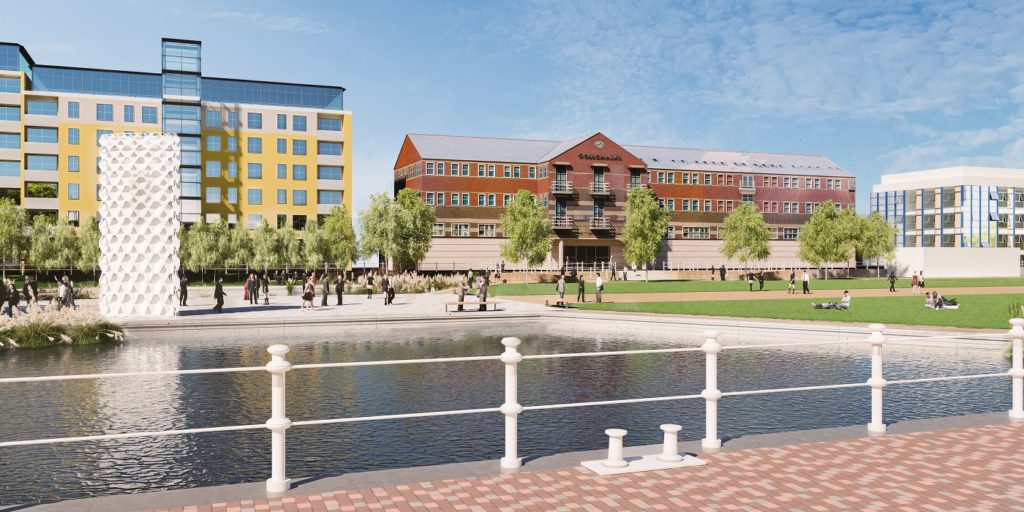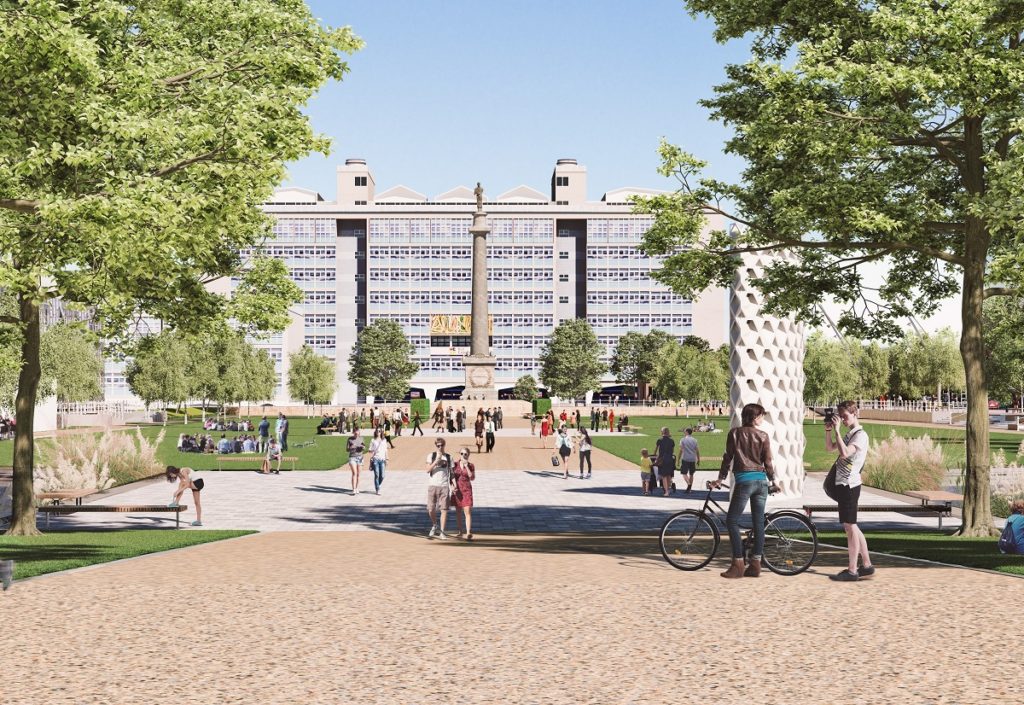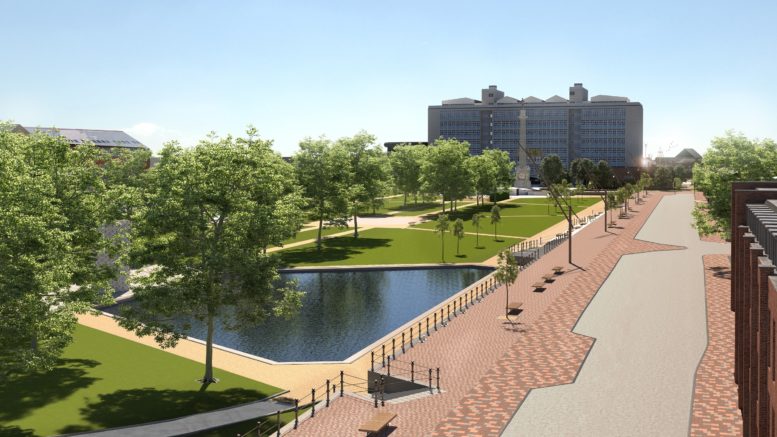The £4.3m Queens Gardens refurbishment has moved a step closer with Hull City Council submitting a planning application for the transformational city centre project.
Plans for the regeneration of the historic gardens include improved public access, improvements to the boundary walls, the introduction of bespoke pieces of public art and restoration of the Rose Bowl fountain.
The plans also incorporate modern, eco-friendly features, including electric vehicle charging points, the introduction of plants and trees to increase the gardens’ biodiversity and the incorporation of designs and functions that will allow the area to be used for flood alleviation.

The ponds will be used to store rainwater during high periods of rainfall.
Councillor Daren Hale, portfolio holder for regeneration and economic investment, said: “It’s an exciting moment for the project.
“We’ve worked closely with local groups and also held public consultation events, and I’d like to thank everyone for their valuable comments and feedback.
“The response to the project has been fantastic. I think the whole city is excited to see such an iconic city centre space regenerated and our rich maritime history celebrated.”
The gardens were created in the 1930s by filling in the then Queens Dock, which was once the largest dock of its kind in the country.
The £4.3m Queens Gardens refurbishment is being funded by Hull City Council. It is associated with the Hull: Yorkshire’s Maritime City project, a key cultural regeneration scheme in the heart of Hull’s city centre that will protect and celebrate 800 years of Hull’s maritime heritage.
The refurbished gardens will create a link between some of the city’s key maritime heritage sites as part of the £30.2m Hull: Yorkshire’s Maritime City project.

The Queens Gardens refurbishment complements the delivery of the Hull: Yorkshire’s Maritime City project through providing improvements to an important pedestrian route between the Hull Maritime Museum and North End Ship Yard.
The existing ponds, as well as being refurbished, will be modernised so that they can be used as large urban water retainers in the event of heavy rainfall.
They will give relief to main drainage system, creating sustainable urban drainage, taking rainwater that falls on nearby buildings and roofs and channelling under the road, holding in the ponds in Queens Gardens. This will stop water going straight into mains drain, offering relief to the drainage system.
The designs would see the planting of a more diverse range of trees to replace the trees that are in a poor condition or require removal due to the design of the park.
For every tree removed, three trees will be planted in the gardens and the city centre.
Trees will be replaced and planted providing species that will improve the biodiversity of the gardens, with foliage that will add variety and seasonal colour, providing a good source of nectar and pollen for birds, bees and insects. Some of the trees within the planting scheme are on the endangered species list.
Extensive planning has ensured the longevity of the tree planting, with species selected that can cope with changes in environment associated with climate change, and has been fully coordinated with the improvements to Queens Gardens. The proposals have been developed to address and secure the overall long-term future of the gardens.
As part of the plans, artists will also create attractive and interactive permanent installations throughout the gardens.
The redesigned gardens will offer a more suitable, large city centre events space that includes amphitheatre-style seating on the garden’s southern edge.
The plans are sympathetic to those of Sir Fredrick Gibberd, one of England’s most distinguished 20th-century architects who redesigned the gardens in the 1950s.




